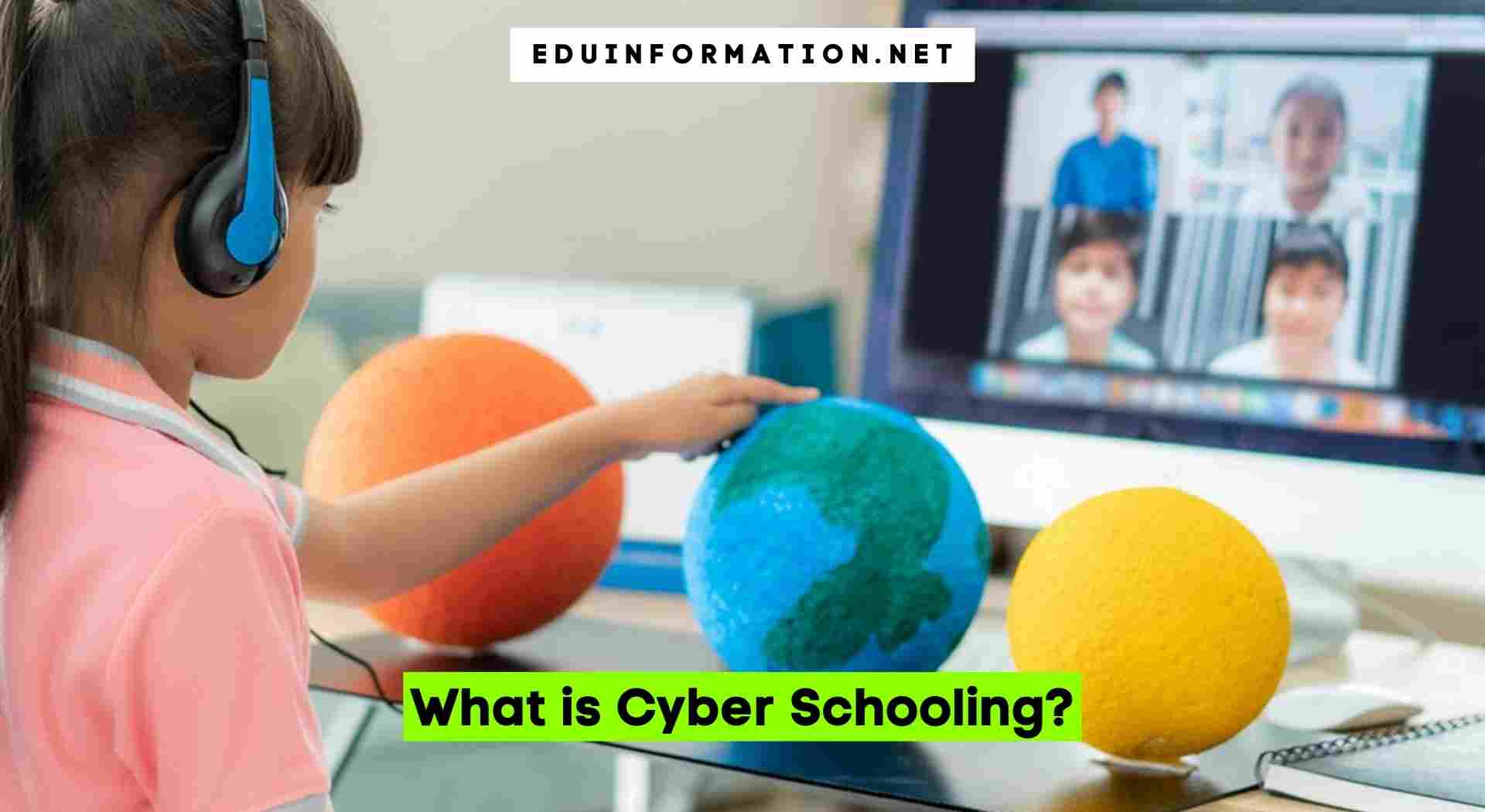Cyber schooling is a form of education that takes place online, allowing students to learn from any location with an internet connection. It offers a flexible and personalized learning experience.
In today’s digital age, education has evolved beyond traditional classrooms. With the advancement of technology, cyber schooling has emerged as a viable alternative. Also known as online education or virtual learning, cyber schooling enables students to attend classes and complete coursework using digital platforms.
Understanding Cyber Schooling: A New Era Of Education
Cyber schooling, also known as online schooling or virtual schooling, has emerged as a new era of education. It involves utilizing technology to deliver educational instruction to students remotely. Through this innovative approach, students can access courses, interact with teachers, and complete assignments from the comfort of their own homes.
Additionally, it provides access to a wide range of educational resources and personalized learning opportunities. As technology continues to advance, more and more students are embracing cyberschooling as an alternative to traditional classroom education.
Flexibility And Convenience For Students

Cyberschooling offers flexibility and convenience, allowing students to learn from the comfort of their own homes. This online learning approach allows for a customized schedule, accommodating various commitments and extracurricular activities. With cyber schooling, students have the freedom to structure their learning around their personal needs and interests.
This flexibility enables them to balance academics with hobbies and passions, nurturing a well-rounded education. Whether it’s pursuing sports, music, or other activities, cyber schooling ensures that students can dedicate sufficient time without compromising their learning. Additionally, the convenience of cyberschooling eliminates the need for long commutes and provides a comfortable and familiar environment for learning.
By embracing cyber schooling, students have the opportunity to optimize their education, prioritizing both academic and personal growth.
Personalized Education And Individualized Learning
Cyberschooling refers to personalized education and individualized learning, where the curriculum is tailored to meet the specific needs of each student. By doing so, it fosters independent learning and allows students to explore their interests and strengths. With cyber schooling, the education process is adaptable to different learning styles, ensuring that students receive an education that works best for them.
This approach recognizes that every student is unique and may require different strategies to succeed academically. It encourages students to take ownership of their learning and empowers them to become active participants in their education. Through cyber schooling, students have the opportunity to learn in an environment that suits them and maximizes their potential for success.
Access To A Diverse Range Of Courses And Resources

Cyberschooling offers access to a wide range of elective courses that students can choose from. They can also take advantage of advanced placement and enrichment programs to enhance their learning experience. One of the key benefits of cyberschooling is the use of technology for research and study materials.
With virtual platforms, students can easily access a diverse range of resources to support their education. By embracing technology, cyber schools provide a flexible and interactive learning environment. Students can explore different subjects and find courses that align with their interests and goals.
This approach to education empowers students to personalize their learning experiences and pursue their passions. With cyber schooling, the possibilities for educational opportunities are endless.
Bridging Gaps And Providing Equal Opportunities
Cyberschooling is an innovative approach that bridges gaps and offers equal opportunities to students. It eliminates geographical barriers by providing education online. This method particularly benefits students with special needs, as it can accommodate their unique requirements, ensuring they receive the support they need.
Moreover, cyberschooling addresses social and cultural concerns by creating an inclusive environment where diversity is celebrated and respected. By embracing technology, this educational model enables students to access quality education from anywhere, leveling the playing field for all. Cyberschooling opens doors for students who may otherwise face limitations due to geographic location, physical disabilities, or other constraints.
It fosters a sense of inclusivity, creating a learning environment that celebrates diversity and provides equal opportunities for all students.
Ensuring Socialization And Community Engagement

Cyberschooling ensures socialization and fosters community engagement through virtual discussions, group projects, and participation in virtual clubs and activities. These online platforms provide students with a space to connect, collaborate, and share ideas with their peers. By actively engaging in these digital environments, students have the opportunity to develop their social and emotional skills, such as communication, teamwork, and empathy.
Cyberschooling promotes a sense of belonging and encourages students to actively participate in discussions, cultivate relationships with their virtual classmates, and contribute to group projects. This virtual format not only provides students with an inclusive learning environment but also encourages them to embrace the digital age while preparing them for future collaboration in online spaces.
Cyber schooling combines academic excellence with social growth, providing a well-rounded education experience.
Cyber Schooling Vs. Traditional Classroom Education
Cyberschooling and traditional classroom education have contrasting teaching approaches. In cyberschooling, student-teacher interaction is impacted differently compared to traditional classrooms. Students may have limited face-to-face interaction with teachers in cyber schools. This can affect the level of personalized attention students receive.
On the other hand, traditional classrooms provide more opportunities for direct interaction between students and teachers. Parents and families considering cyberschooling should take into account the potential impact it may have on student-teacher communication. Parents need to evaluate the teaching approach and consider whether it aligns with their child’s learning style and needs.
As cyber schooling can be a less traditional form of education, parents should also consider the adjustments their family may need to make to support their child’s education.
Conclusion
By embracing this modern approach to education, students can unlock their full potential and make the most of their learning experience. So, if you’re looking for a flexible, personalized, and innovative educational option, cyberschooling might just be the perfect fit for you or your child.

